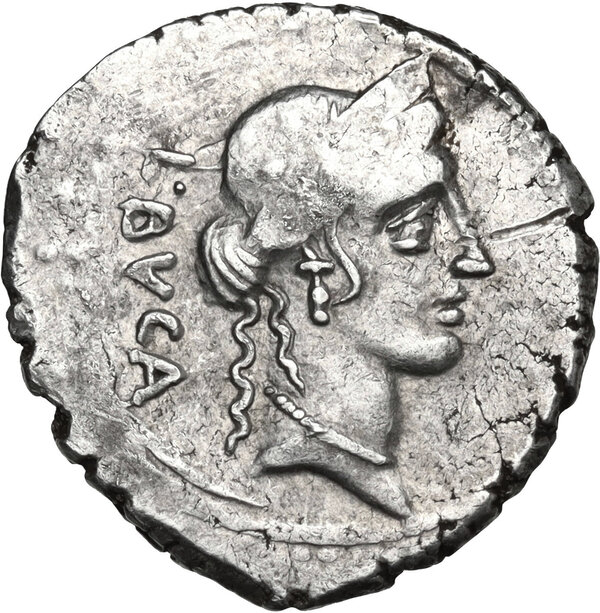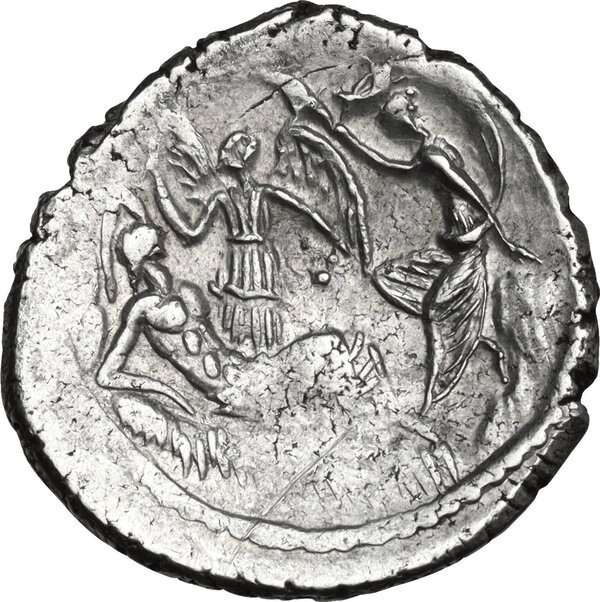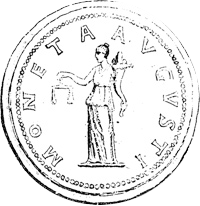Sulla's Dream


L. Aemilius Buca. AR Denarius, Rome mint, 44 BC (before 15 March, Caesar death). Obv. Diademed head of Venus right; on the left, L·BVCA. Rev. Sulla reclining right on rock; Selene descending left from mountain; Victory standing facing between, holding palm and branch. Cr. 480/1; B. 12 (Aemilia). 3.62 g. 19.50 mm. RRR. An attractive example of this very rare and fascinating issue. Sound metal and broad flan. Minor areas of weakness and tiny scratch on obverse, otherwise. good VF. Plutarch relates that while Sulla was marching on Rome in 82 BC, “It is said, also, that there appeared to Sulla himself, in a dream, a certain goddess, whom the Romans learnt to worship from the Cappadocians, whether it be the Moon, or Pallas, or Bellona. This same goddess, to his thinking, stood by him, and put into his hand thunder and lightning, then naming his enemies one by one, bade him strike them.” The lack of any warlike thunderbolts and the improbability that Luna was the goddess involved, would seem to indicate that the reverse scene of this coin is not a representation of such an insignificant event as the vaguely reported dream of Sulla. It is also much more likely that the protagonist goddess of the reputed dream was the early Roma war goddess Bellona, identified with Ma the Mother Goddess of Cappadocia. The earlier suggestion by Babelon and Oman that the reverse scene represents the myth of Selene, who fell in love with the handsome shepherd Endymion and caused her father Zeus to cast him into eternal sleep in a cave on Mount Latmos, does not explain the presence of Victory in the background.
An alternative interpretation for this scene is that it is a very early Caesarian posthumous issue portraying the apotheosis of Julius Caesar. A victorious and heroic figure reclining on a bier greeted by Luna, patroness of Caesar’s great public spectacles, with the upright torch of immortality, may be seen as indicating the Divus Julius. (Italo Vecchi, CNG 66, 2004, 1321).
An alternative interpretation for this scene is that it is a very early Caesarian posthumous issue portraying the apotheosis of Julius Caesar. A victorious and heroic figure reclining on a bier greeted by Luna, patroness of Caesar’s great public spectacles, with the upright torch of immortality, may be seen as indicating the Divus Julius. (Italo Vecchi, CNG 66, 2004, 1321).


